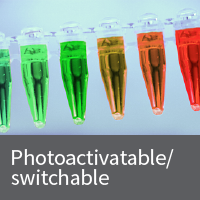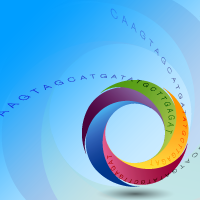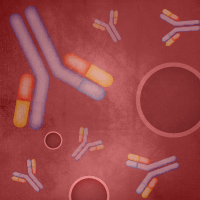Photoconvertible fluorescent proteins

Living Colors Dendra2 is a photoswitchable (green to red), monomeric fluorescent protein derived from octocoral Dendronephthya sp. The Dendra2 sequence has been optimized for maturation and a bright fluorescence both before and after photoswitching. Its codon usage is optimized for high expression in mammalian cells, but Dendra2 can be expressed in many other systems as well.
Living Colors Dendra2 is a photoswitchable (green to red), monomeric fluorescent protein derived from octocoral Dendronephthya sp. The Dendra2 sequence has been optimized for maturation and a bright fluorescence both before and after photoswitching. Its codon usage is optimized for high expression in mammalian cells, but Dendra2 can be expressed in many other systems as well.
Dendra2 matures efficiently both at 20 and 37°C, which makes it applicable to a wide range of experimental systems, from cultured mammalian cells to cold-blooded animals. Mammalian cells transiently transfected with Dendra2 display an evenly distributed green signal (e.g., without aggregation) within 10–12 hours post-transfection. No cell toxicity is observed.
Visualizing Dendra2 and Dendra2-tagged proteins
- Visualizing green (unswitched) Dendra2
Unconverted Dendra2 has excitation and emission maxima at 490 and 507 nm, respectively, similar to other green fluorescent proteins. Thus, an FITC (or analogous) filter set is ideal for visualizing green Dendra2.
NOTE: Light of the same wavelength (intense blue light irradiation at 460–500 nm) is required to visualize and photoconvert Dendra2. Importantly, Dendra2 photoconversion occurs only at high light intensities, whereas Dendra2 green fluorescence can be detected at low light intensities. Be careful to select conditions that allow you to detect the green signal without undesirable photoconversion to red. - Switching Dendra2 from green to red
You can photoconvert Dendra2 from green to red by light irradiation in either the UV (360–420 nm) or blue region (460–500 nm). We recommend that you use either a commonly available, 488-nm Ar laser line or a 405-nm diode laser (more efficient, but UV light can harm cells). - Visualizing red (switched) Dendra2
Converted Dendra2 protein has excitation and emission maxima at 553 and 573 nm, respectively. Thus, a TRITC (or analogous) filter set can be used to visualize red Dendra2. Once it is irreversibly switched to its red form, Dendra2 is highly photostable. This makes it extremely useful for long-term protein tracking applications.
Excellent performance in fusion applications
Dendra2 is a monomeric fluorescent protein which has been successfully fused to a variety of proteins including cytoplasmic beta-actin, BH3 interacting domain death agonist (BID), nucleolar protein fibrillarin, vimentin, and alpha-tubulin.
High-contrast visualization
After complete photoconversion, the red fluorescence of Dendra2 increases 150–300 times, whereas the level of green fluorescence becomes 10–15 times lower. Thus, the increase in the red-to-green fluorescence ratio results in ~4,000-fold contrast. This provides a molecular tool to simultaneously track both the movement of the activated protein and its replacement with the non-activated form.
Dendra2 sequence files can be found in the Documents tab in the product table below.
Overview
- Living Colors Dendra2 is a green-to-red, high-contrast photoswitchable fluorescent protein
- Irreversible switching from green to red is activated by UV or blue light
- Switched (red) form is highly photostable
- Matures at a wide range of temperatures
- Monomeric fluorescent protein; suitable for fusions
More Information
Applications
- Tracking cell, organelle, and protein movement
- Visualizing real-time protein dynamics (movement, degradation, etc.)
- Monitoring selective cell fate
- Determining protein half-life
Additional product information
Please see the product's Certificate of Analysis for information about storage conditions, product components, and technical specifications. Please see the Kit Components List to determine kit components. Certificates of Analysis and Kit Components Lists are located under the Documents tab.

Cloning shouldn't be work, it should just work ...
With In-Fusion technology, you will be able to perform directional, seamless cloning of any PCR fragment—or multiple fragments—into any linearized vector in a single 15-minute reaction, with >95% cloning efficiency. Our In-Fusion bundles are complete systems that include all of the reagents you need for your cloning experiments: PCR enzyme, competent cells, and a kit for PCR cleanup or gel extraction. We have optimized the reagents to work together to give you the right clone the first time.
In-Fusion Snap AssemblyTakara Bio USA, Inc.
United States/Canada: +1.800.662.2566 • Asia Pacific: +1.650.919.7300 • Europe: +33.(0)1.3904.6880 • Japan: +81.(0)77.565.6999
FOR RESEARCH USE ONLY. NOT FOR USE IN DIAGNOSTIC PROCEDURES. © 2025 Takara Bio Inc. All Rights Reserved. All trademarks are the property of Takara Bio Inc. or its affiliate(s) in the U.S. and/or other countries or their respective owners. Certain trademarks may not be registered in all jurisdictions. Additional product, intellectual property, and restricted use information is available at takarabio.com.




